Cities in Italy aren’t like ordinary metropoles. From their history and charm to their aesthetic appeal and attractions, they’re a joy to explore.
You wander age-old cobblestone streets, trying not to drop your gelato as you gawp at 2,000-year-old monuments strewn casually throughout town.
Almost every Italian city is worth exploring. But with limited time available, which ones should you prioritize on your Bel Paese itinerary? To help you decide, here are 30 of the best Italian cities around the country.
1. Turin (Piedmont)

Located at the foot of the Alps, Turin was Italy’s first capital city between 1861 and 1865. It’s renowned for its grand Baroque architecture, untouristy vibe, and the world-famous Shroud of Turin. It’s a bustling, elegant Italian city and a great gateway to other northern parts of the country.
2. Milan (Lombardy)

Milan is the world’s fashion capital, a hotbed of culture, art, and entertainment, and a popular place for foodies. It’s home to Da Vinci’s iconic The Last Supper, the striking Duomo di Milan (cathedral), Castello Sforzesco, and countless museums and galleries.
3. Bergamo (Lombardy)
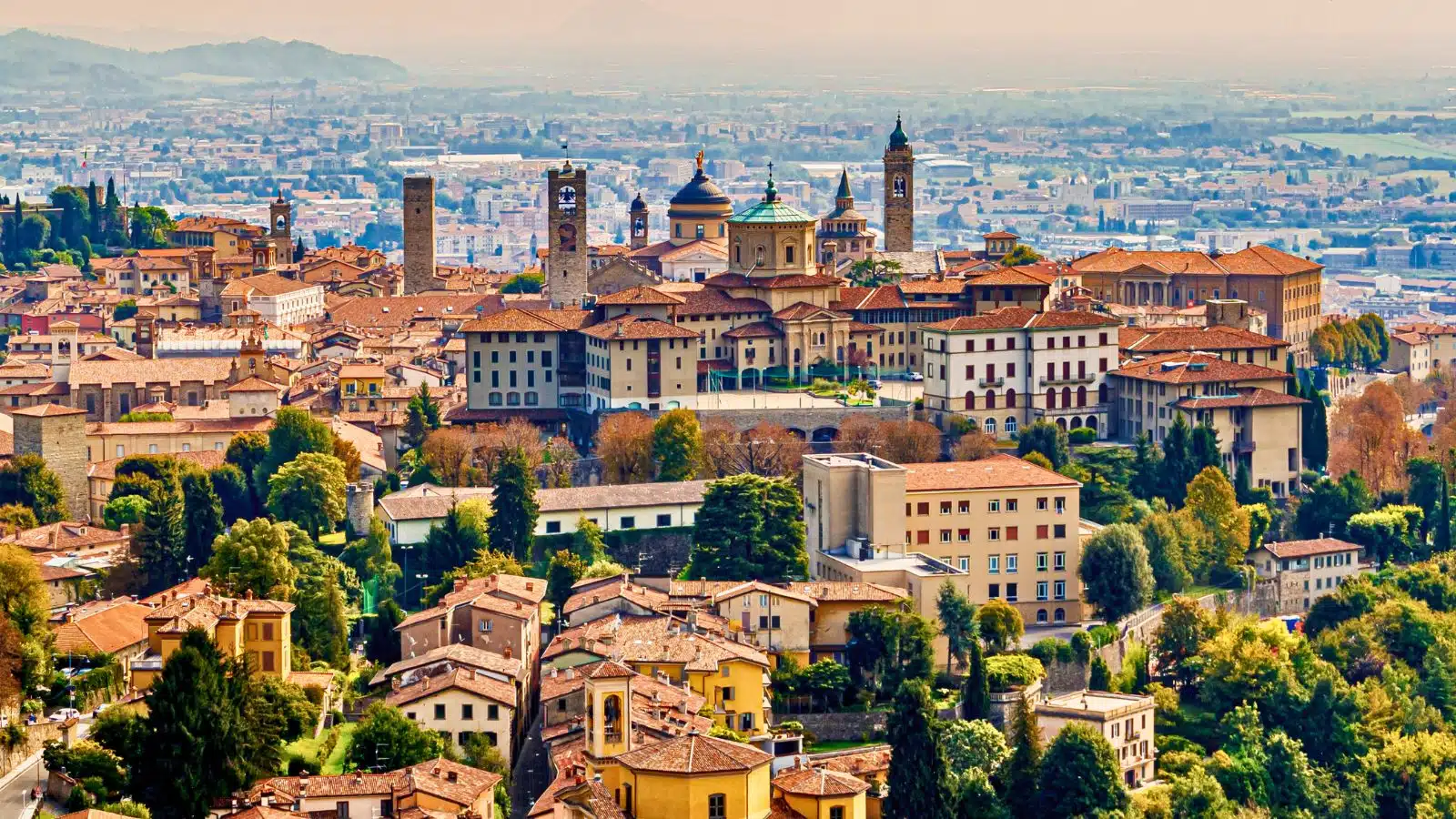
Bergamo is a popular day trip from Milan that is less than an hour away by car. While the modern city isn’t much to write home about, its old town (a UNESCO World Heritage Site) is a charming medieval maze of fortified walls, cobblestone streets, and beautiful architecture. Its hilltop location offers terrific views of the area.
4. La Spezia (Liguria)

La Spezia is a modern coastal city with ancient Roman foundations. Like most cities in Italy, its charm lies in the historic center, where narrow winding streets and pretty piazzas await. Its waterfront, old palaces, and 14th-century Castello di San Giorgio add further appeal. La Spezia is also a gateway to Cinque Terre, which is another unmissable part of Italy.
5. Trento (Trentino/Aldo Adige)

Trento is a beautiful Italian city northeast of Lake Garda. It’s a hidden gem tucked away from Italy’s main tourist traps but with loads to see and do.
Mountains and verdant valleys surround it. There are historic buildings, like the Cathedral and Castello del Buonconsiglio. And you’ll find narrow medieval streets, city walls, and piazzas full of atmosphere to enjoy.
6. Bolzano (Trentino/Aldo Adige)

Located northeast of Trento, Bolzano is the gateway to the Dolomites. This beautiful city in Italy was part of the Austrian Empire until 1918, which explains the unique blend of cultural influences found here. The mountainous landscape is a joy for outdoor lovers, and the city itself packs the usual Italian charm – just with a distinctive Germanic twist.
7. Trieste (Friuli-Venezia Giulia)

Trieste is nestled in the far northeast, on the Slovenian border. This isolated location makes it another Italian city with a unique vibe. Latin, German, and Slavic influences combine here. Historic ruins, huge piazzas, the picturesque Grand Canal, and a gorgeous waterfront make Trieste a memorable place to explore. Day trips to Slovenia top it off.
8. Verona (Veneto)
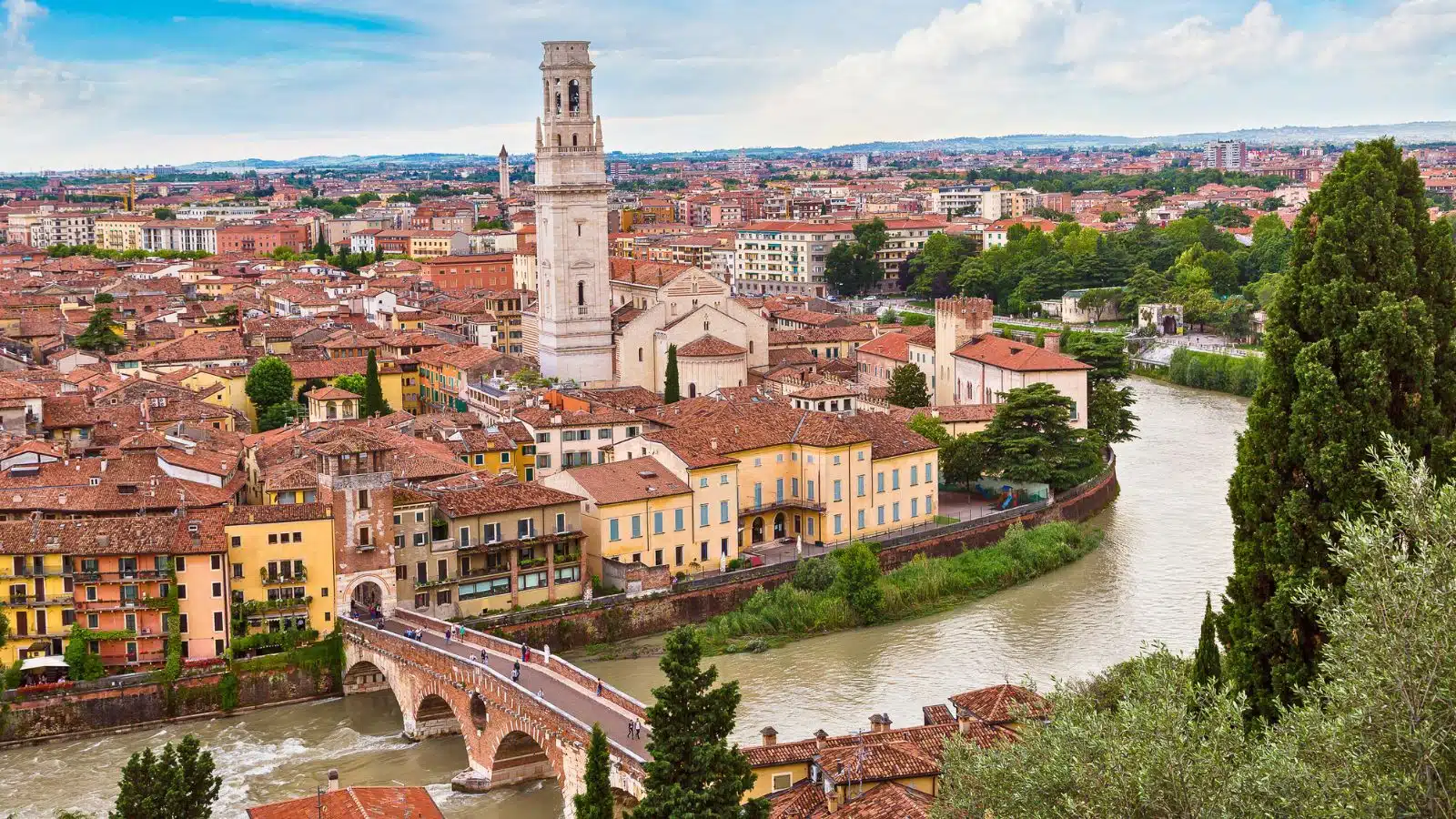
Verona is known for its connections to Shakespeare’s Romeo and Juliet, with Juliet’s Balcony being one of the city’s busiest tourist attractions. It’s also known as “Little Rome,” courtesy of its immense Roman amphitheater. Its rich history, maze of medieval streets, and Renaissance architecture make Verona an underrated northern Italy city.
9. Venice (Veneto)
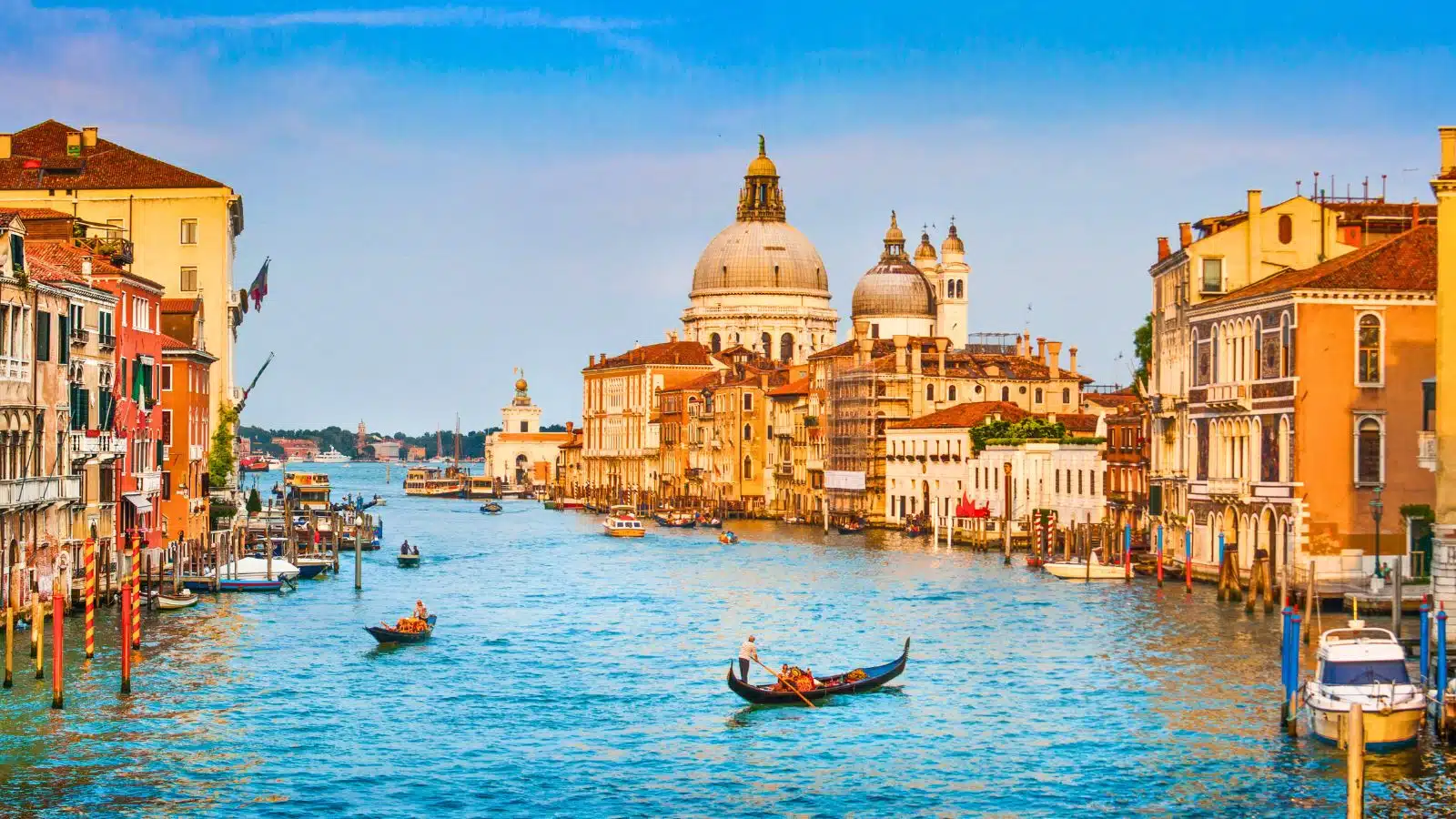
Venice needs no introduction. This city, built on water in northeast Italy, is an iconic medieval fairytale destination that attracts millions of tourists annually. Its intricate canal network, Venetian Gothic architecture, and singing gondoliers make it one of the most famous cities in Italy.
10. Bologna (Emilia-Romagna)

Tourists often overlook Bologna as they traverse the country. But those who visit experience another historic and vibrant city well-known for its culinary scene. Incredible buildings glow in warm orange hues, and amazing porticos are almost literally around every corner.
11. Aosta (Aosta Valley)
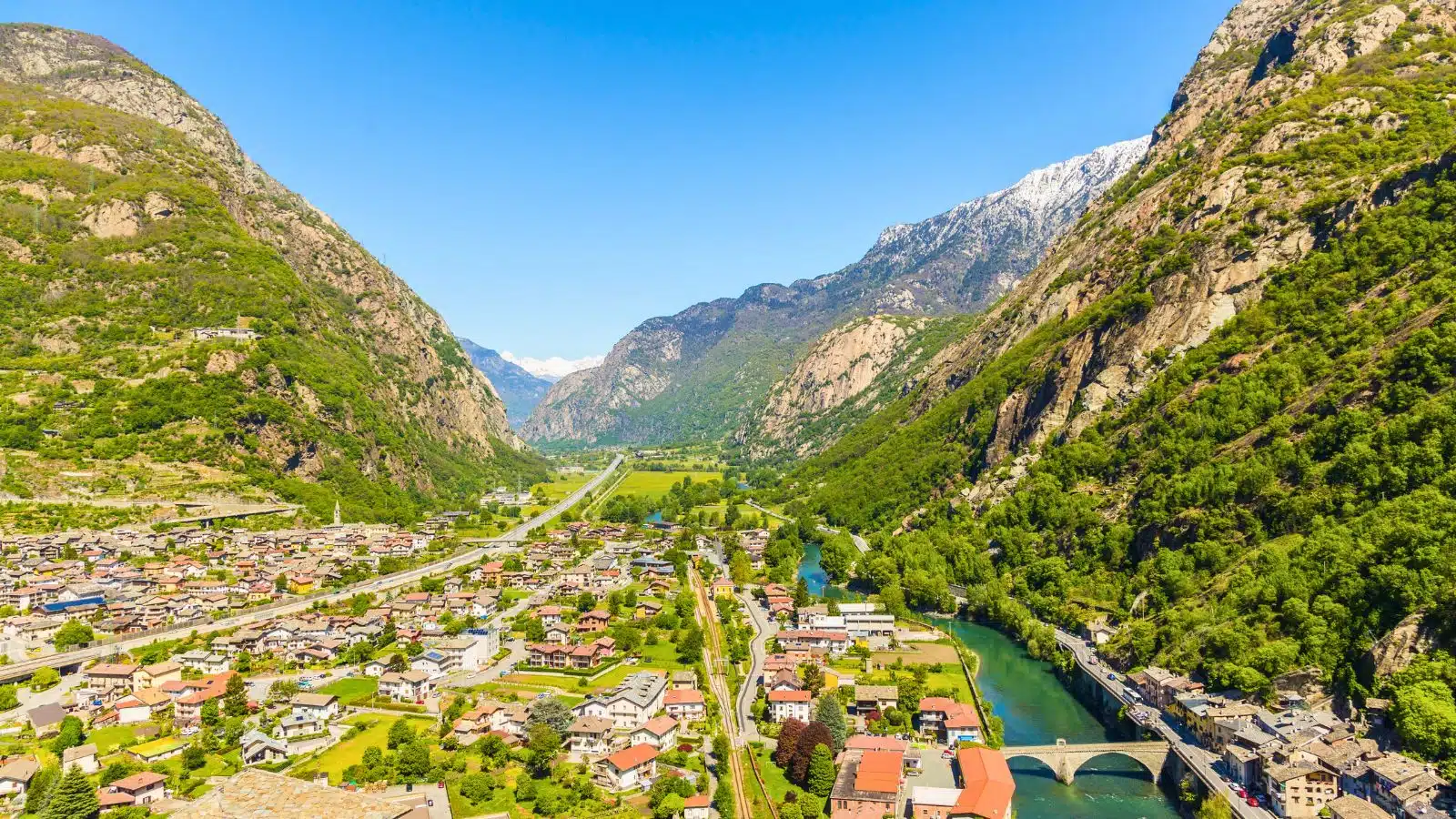
Nicknamed the “Little Rome of the Alps,” Aosta is notorious for its ancient Roman ruins nestled in a glorious alpine valley. It’s a beautiful city in Italy that is popular with outdoor enthusiasts and history buffs. It’s in the Aosta Valley, which is full of hiking trails in summer and ideal for skiing in winter. There’s also a string of castles to visit, adding to the historical intrigue.
12. Genoa/Genova (Liguria)

Genoa, sometimes called Genova, is a colorful coastal Italian city with a rich history. Between the 12th and 15th centuries, this was one of the most powerful and wealthy places on earth. Famed Italian explorer Christopher Columbus was born here, too. Expect grand architecture, a busy harbor, and endless things to do.
13. Florence (Tuscany)
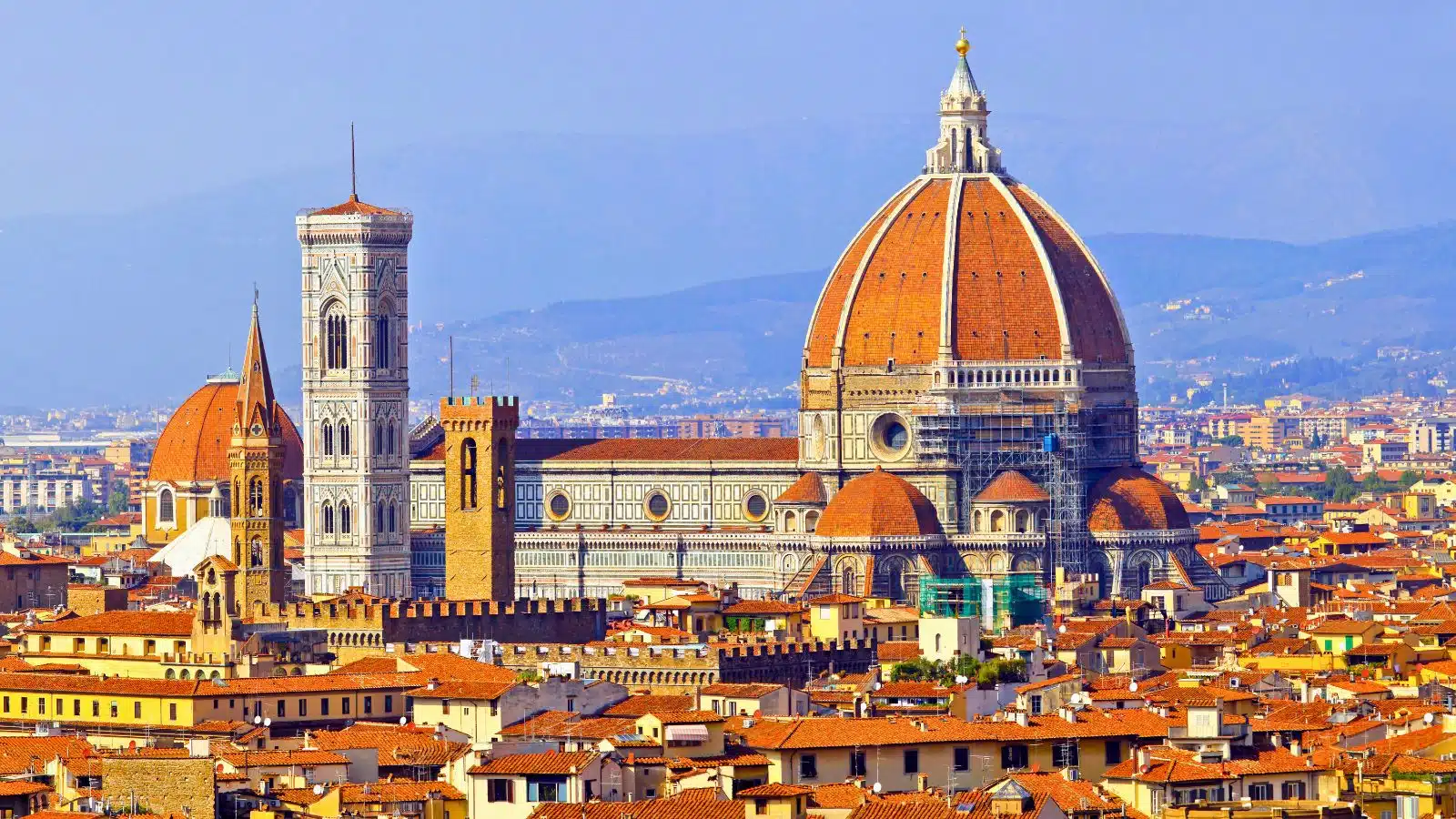
Florence is known as the birthplace of the Renaissance, and its array of striking medieval architecture reflects that. The mighty Duomo at its heart is one of the city’s most iconic attractions, but the entire place feels stuck in a medieval time warp! Michelangelo’s David and Ponte Vecchio are two notable entries on a long list of Florentine attractions.
14. Pisa (Tuscany)
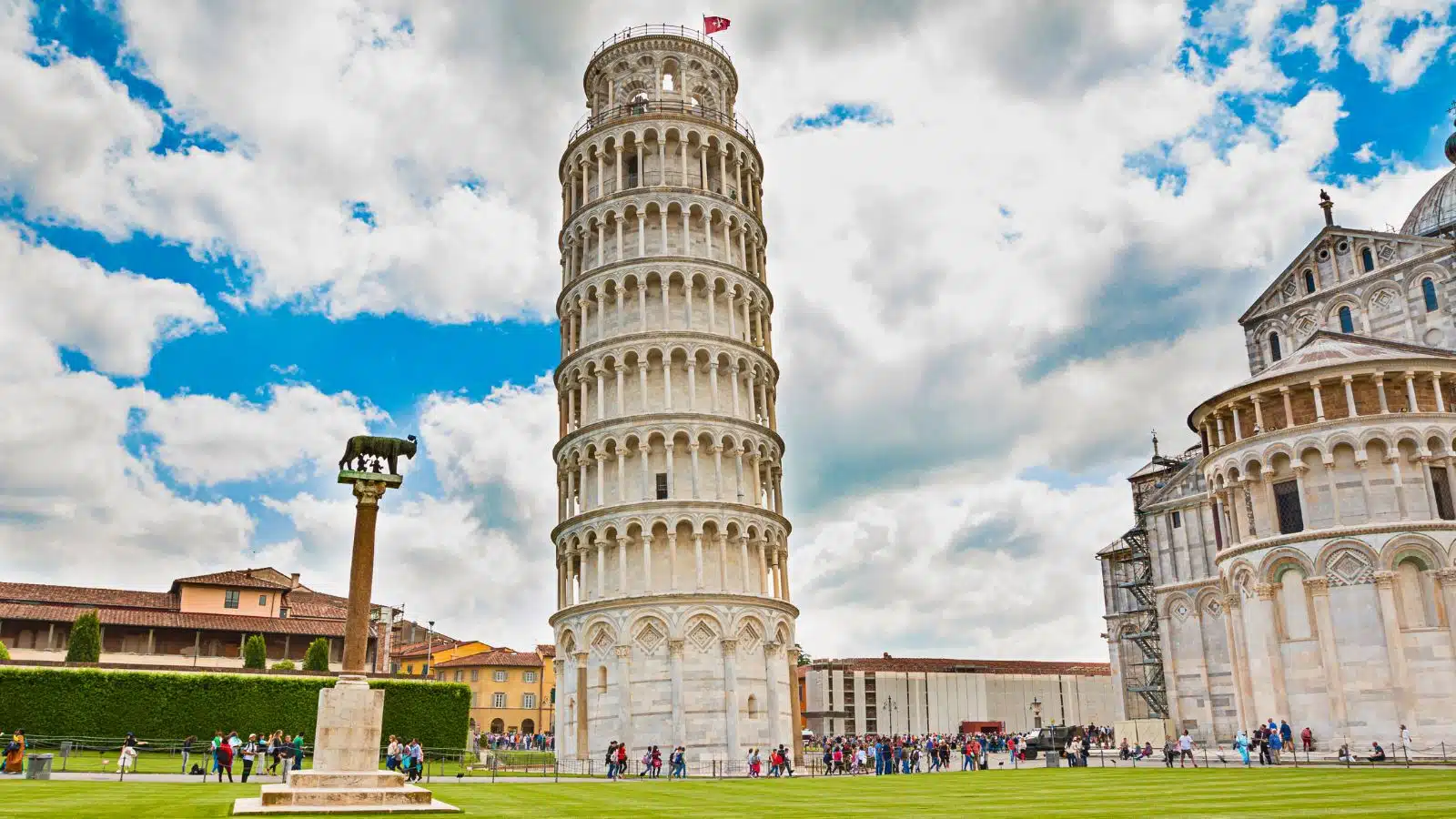
Pisa is a lively student city in central Italy that is famous for its eponymous leaning tower. This 56-meter-tall structure leans at a gravity-defying angle, drawing crowds of tourists year-round.
While the Leaning Tower is by far this Italian city’s star attraction, its local vibe, pretty streets, thriving food scene, and the Arno River are what really make visiting Pisa worthwhile.
15. Ancona (Marche)

Look beyond Ancona’s gritty port, and you’ll find a maritime city with lots of appeal. Located on Italy’s Adriatic coast, it has a long history dating back to Ancient Greece. The Romans came next. That rich past is evident in Ancona’s diverse architecture and cultural attractions. It also has some stunning beaches in the vicinity.
16. Perugia (Umbria)

Perugia is the capital of the Umbria region and is easily accessible from major Italian cities like Rome and Florence. Its hilly disposition creates views almost as impressive as its medieval architecture. Perugia’s evocative defensive walls, mighty buildings, such as the Duomo and Palazzo dei Priori, and piazzas and streets from the Middle Ages add to its charm.
17. Siena (Tuscany)

With its medieval streets, terracotta roofs, and surrounding countryside, Siena is a quintessential Tuscan city. It’s a popular place with lots to see and do. The jaw-dropping Duomo, Piazza del Campo, and the Palazzo Pubblico with its Torre del Mangia are a few main attractions.
18. Lucca (Tuscany)

Lucca is another picture-perfect Tuscan city adored by history buffs. The Etruscans founded it, and then the Romans moved in (Lucca’s streets map directly onto the Roman colony’s original layout from 2000 years ago).
It’s encircled by 16th-century defensive walls, and there’s amazing medieval architecture throughout, including the Torre Guinigi with its rooftop garden. The rolling hills and countryside surrounding Lucca are beautiful, too.
19. Rome (Lazio)

Ask someone to name a city in Italy, and Rome is probably the answer you’ll get. The capital is one of the planet’s most famous tourist destinations. It’s a place where the ancient and modern worlds co-exist in spectacular fashion.
The Colosseum, Roman Forum, and Vatican City are three of Rome’s major attractions, although there are endless things to do. Here’s how many days in Rome I recommend setting aside.
20. Livorno (Tuscany)

Located 20 km south of Pisa on the coast, Livorno is a dreamy port city founded in 1017. It has Venice-like canals, striking fortresses, and the medieval charm you’ll come to expect from Tuscany.
Don’t miss the grand Mascagni Terrace – an elegant piazza with a checkered floor that overlooks the sea. Livorno’s also popular with lovers of fresh seafood.
21. Campobasso (Molise)

Campobasso is the capital of Molise, a lesser-known and untouristy region of Italy. The city’s most iconic structure is the 15th-century Monforte Castle (Castello Monforte), which sits on a hill overlooking the area. There are plenty of churches, museums, and narrow medieval streets to explore, too.
22. Naples (Campania)

Naples is Italy’s third-largest metropolis. It’s much grittier than other parts of the country, but its authentic vibe, history, food (Naples is the birthplace of pizza), and coastal location make it well worth visiting.
Highlights include the National Archaeological Museum, the Via dei Tribunali (for the best pizza in town), and Castel Sant Elmo. Naples is also close to other famous destinations, such as Pompeii and the Amalfi Coast.
23. Potenza (Basilicata)

Potenza is the capital of the Basilicata region in southern Italy. At 819 meters above sea level, it’s the highest regional capital in the country. Unfortunately, earthquakes have destroyed many of Potenza’s ancient attractions, which explains its modern aesthetic. Its historic center still offers a taste of old Italian charm, though, with narrow streets, piazzas, and churches to visit.
24. Matera (Basilicata)
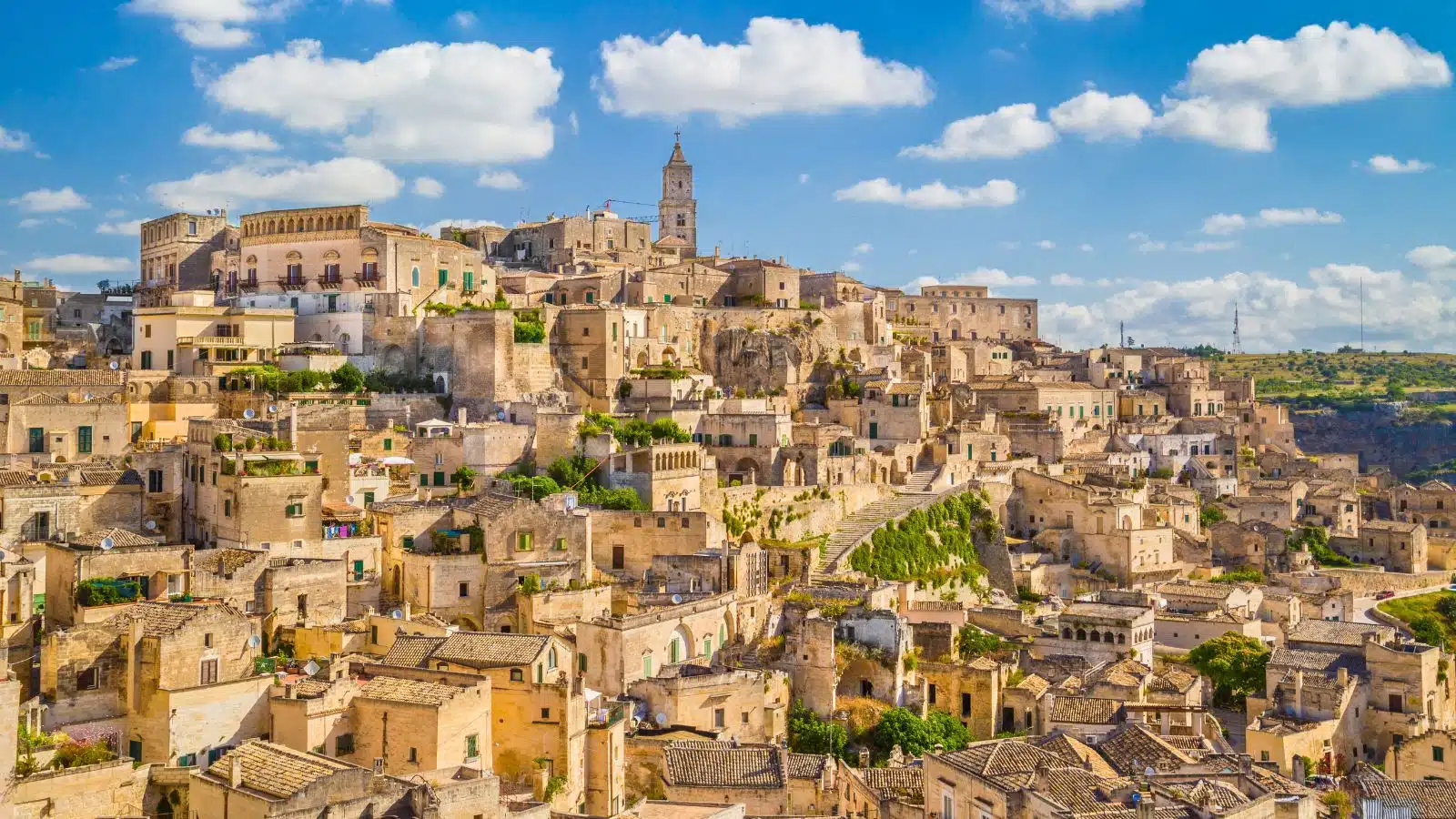
This UNESCO World Heritage Site featured in the 2021 James Bond movie, No Time to Die. Yet that’s not the only reason Matera is one of Southern Italy’s most distinctive cities. It’s a maze of old stone buildings and pretty piazzas perched atop a rocky plateau. There’s a lot to do, but Matera’s most famous attractions are probably its intricate millennia-old cave dwellings.
25. Bari (Apulia/Puglia)

This port city on the Adriatic coast is the capital of Apulia/Puglia and a common entranceway to the region. Many tourists skip Bari on their trips around Italy, but it’s worth exploring – especially the attractive streets and piazzas of Bari Vecchia (Old Bari).
You can stroll along old city walls, explore the castle (Castello Svevo di Bari), eat freshly made street food, relax on the beach, and much more.
26. Catanzaro (Calabria)

Catanzaro is the capital of the Calabria region and was once the center of Italy’s silk industry. It’s nicknamed “The City between two seas” for its location at Italy’s narrowest point, where just 21 miles separate the Ionian and Tyrrhenian coasts. Beaches, parks, impressive bridges, and beautiful surroundings are a few of Catanzaro’s highlights.
27. Lecce (Apulia/Puglia)

If Italy is a boot, Lecce is located on its heel (i.e., in the southeast!). It’s a landlocked city in Apulia/Puglia that is famous for its ancient history and Baroque architecture.
Expect amazing churches, age-old city gates, the ruins of a Roman amphitheater, and those narrow, cobbled streets we all adore. An 18th-century travel writer called Thomas Ashe described Lecce as “the most beautiful city in Italy.”
28. Reggio Calabria (Calabria)

Moving from Italy’s heel to its toe, Reggio Calabria is a coastal city that’s a stone’s throw from Sicily across the Strait of Messina.
Although people have lived in this strategic location for over 2,000 years, earthquakes and subsequent redevelopment have turned Reggio Calabria into a modern-looking city. The waterfront offers epic views of Mount Etna in the distance.
29. Palermo (Sicily)

Located in the northwest of Sicily, Palermo is a major Italian city known for its history, art, diverse architecture, music, and food. Having been conquered and ruled by numerous empires over the last 2,700 years, it’s also a melting pot of cultural influences. Highlights include the Palatine Chapel, Monte Pellegrino, bustling markets, and the Norman Palace.
30. Cagliari (Sardinia)

Sardinia’s bustling capital city is known for its history, colorful buildings, medieval hilltop Castello, and fantastic coastal location. You’ll find a diverse set of attractions here, including the ruins of a Roman amphitheater, beaches, museums, cathedrals, palaces, and markets.
Which City in Italy Will You Visit First?
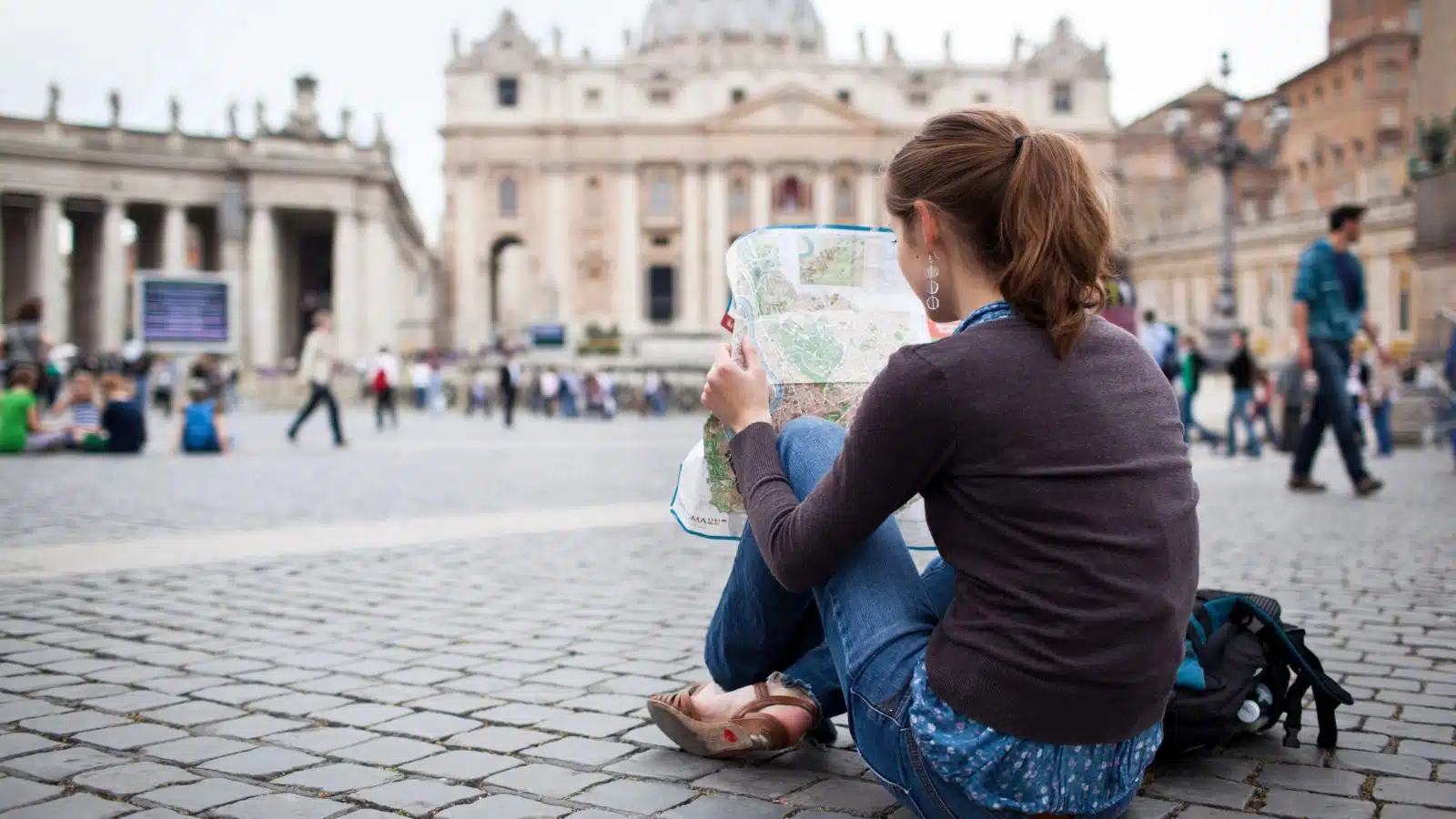
Cities in Italy aren’t like other metropoles around the world. Most were founded thousands of years ago, and they have the character and historical attractions to prove it! I hope this list will help you decide which Italy cities to visit when travelling there.
Want to learn about some more amazing places and activities in Bel Paese? Check out the following posts:
14 Unmissable Things to Do In Italy (North and South Suggestions)
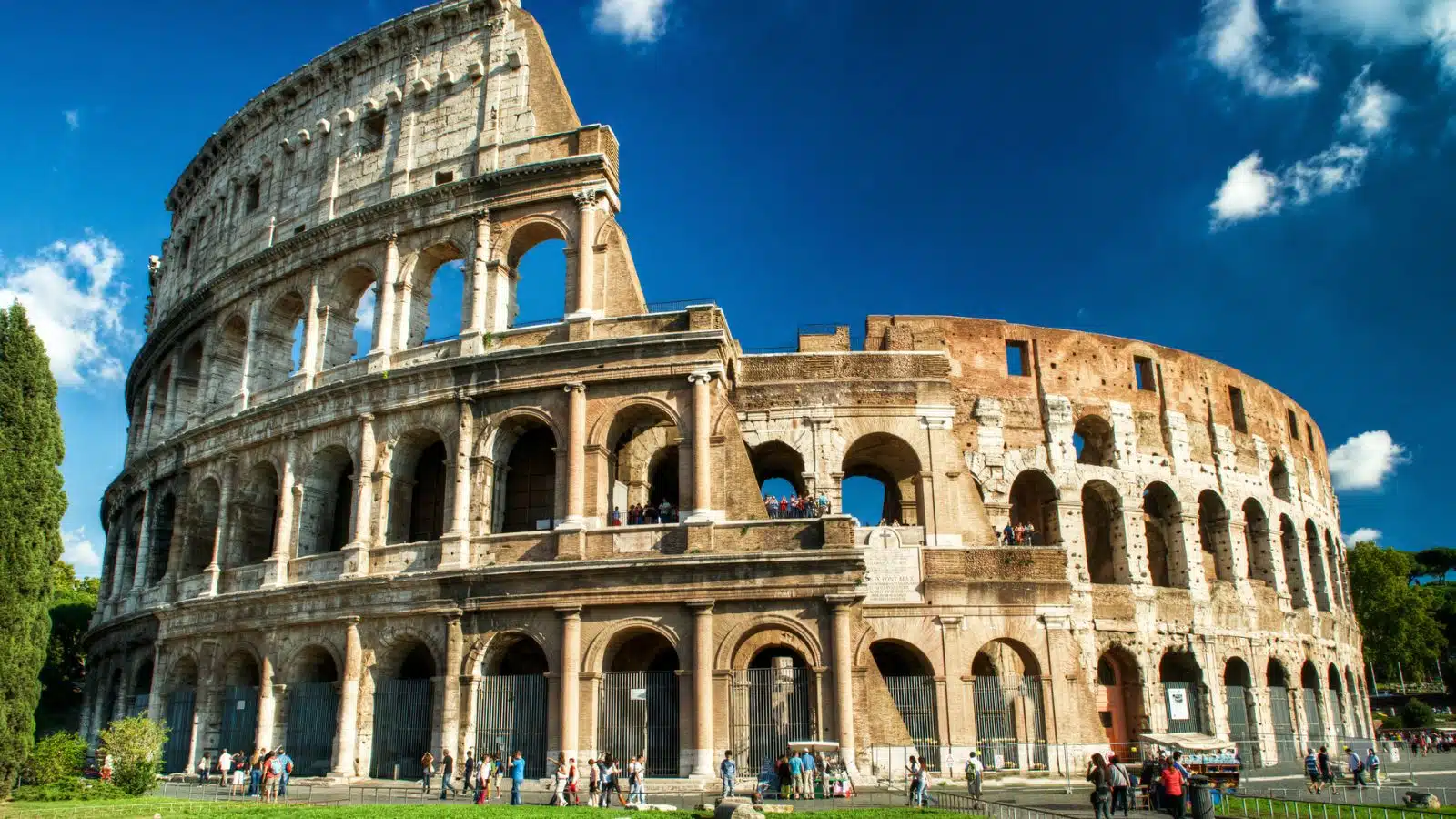
Looking for the best things to do in Italy? Whether you’re exploring the north or south, read on to discover a bunch of amazing options for your Italy itinerary!
14 UNMISSABLE THINGS TO DO IN ITALY (NORTH AND SOUTH SUGGESTIONS)
Ultimate Guide to Where to Stay In Cinque Terre, Italy
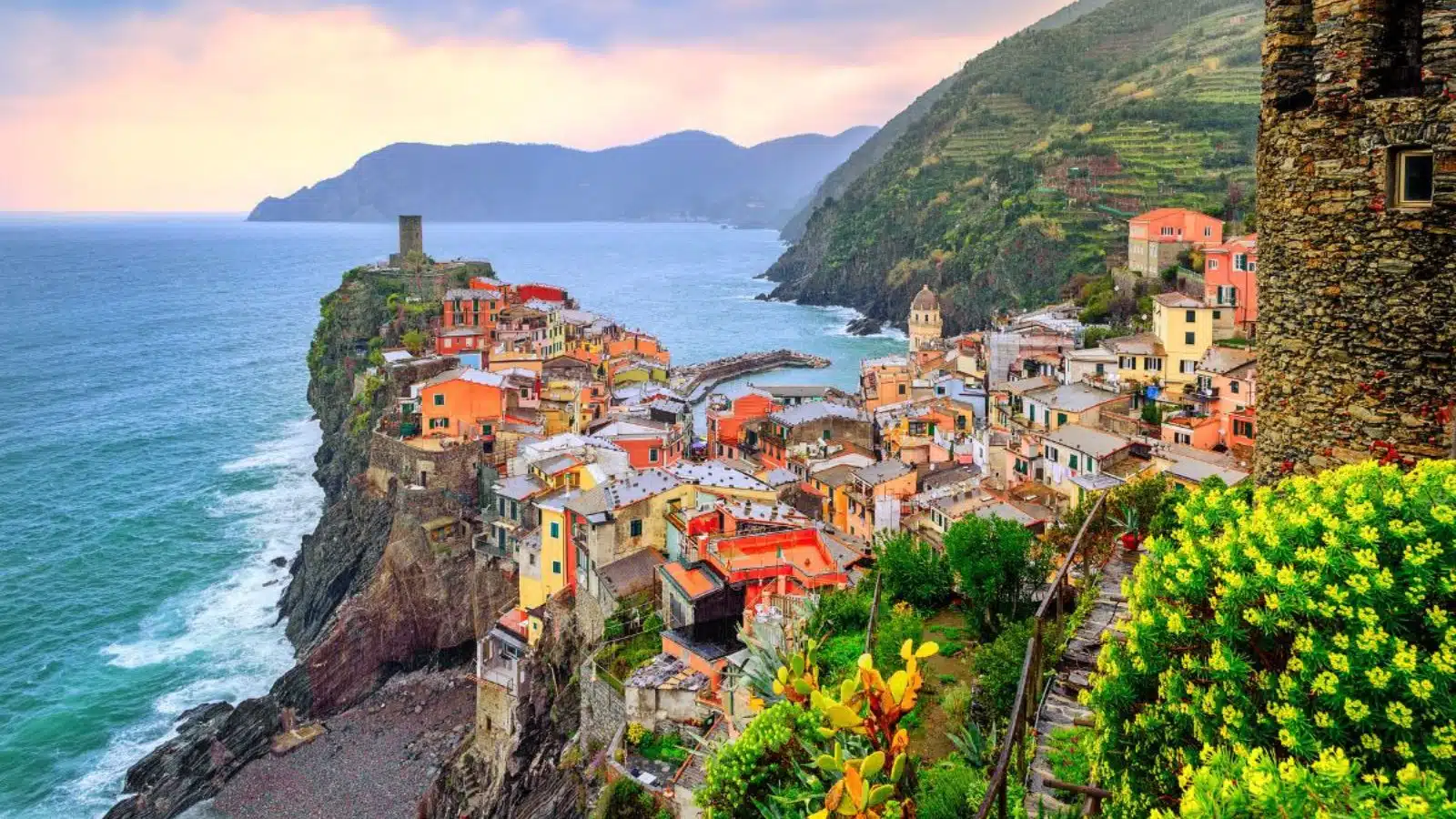
Planning a trip to Cinque Terre and wondering where to book accommodation? Check out this guide to where to stay in Cinque Terre, Italy.